Going Blood Simple: How Dashiell Hammett Invented Noir Fiction in Butte, America
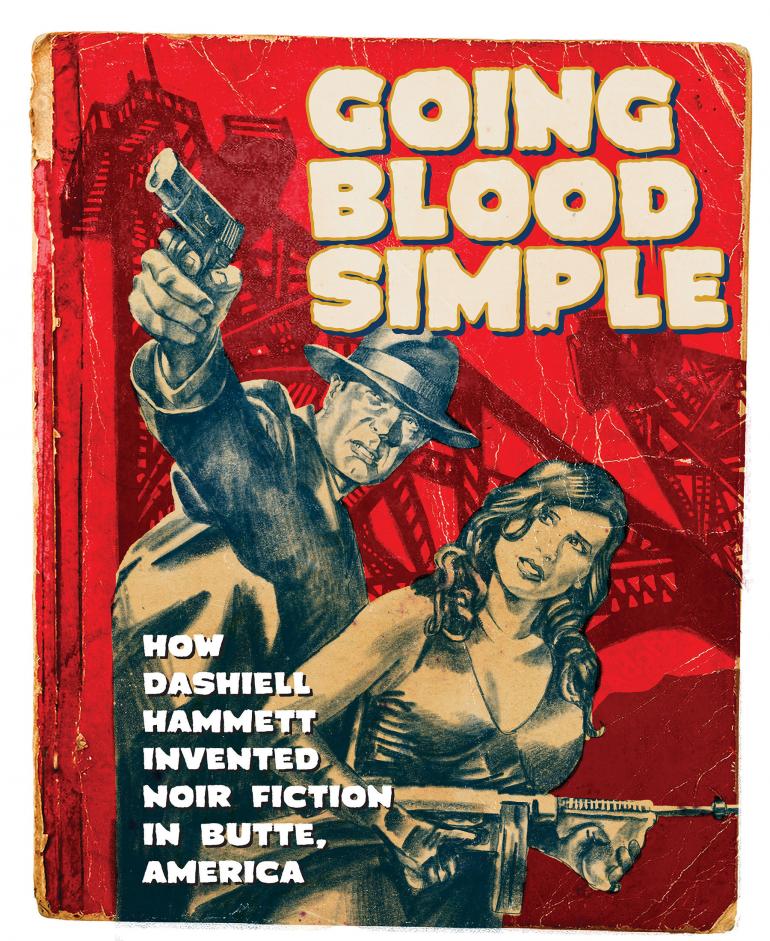
Graphic by Rob Rath
Despite the detective mystery story having been more or less the invention of the American Edgar Allen Poe, the English subsequently picked up the baton.
First by way of Dickens and then Arthur Conan Doyle's iconic Sherlock Holmes, they made it into a genteel genre in which mustachioed detectives solved bloodless murders in country estates, on luxury cruises, or while riding trans-continental trains.
Then, in the early 20th century, writer Dashiell Hammet took the mystery, kicked the legs out from under it, and sent it tumbling into the gutter.
Before he was a writer, Hammett was a detective for the famous independent Pinkerton Detective Agency, working mainly out of the San Francisco office, though for a brief time after WWI, he worked in the Spokane office, which brought him to cases all over the Inland Northwest and Montana. In a piece he later wrote for a magazine entitled "From the Memoirs of a Private Detective," he remembers several cases in Montana. Hammett describes transporting a prisoner from Gilt Edge (now a ghost town) to Lewistown. At first, the man professed his innocence over and over, but after Hammett's vehicle broke down, Montana weather became an interrogation technique in itself: "After shivering all night on the front seat his morale was low," Hammett wrote, "and I had no difficulty in getting a complete confession from him while walking to the nearest ranch early the next morning."
Hammett would have another brush with Montana that would inspire the book that made him famous, changed American letters forever, and introduced the world to a new genre.
And, well, it may not have even happened.
Frank Little was a vocal agitator who was famous for risking life and limb to spread the gospel of the Industrial Workers of the World, a global union which many other domestic unions, such as the American Federation of Labor, regarded as too radical. Indeed, the IWW had had connections with socialist and anarchist groups. Frank Little was one of the most passionately radical of the "wobblies," or IWW men, opposing America's entry into the Great War and calling the U.S. soldiers fighting abroad "Uncle Sam's scabs in uniform." Needless to say, he made enemies. Before he arrived in Butte in 1917 he had already suffered a broken ankle during a labor dispute in Arizona, a hernia in Mississippi, and a kidnapping in Duluth.
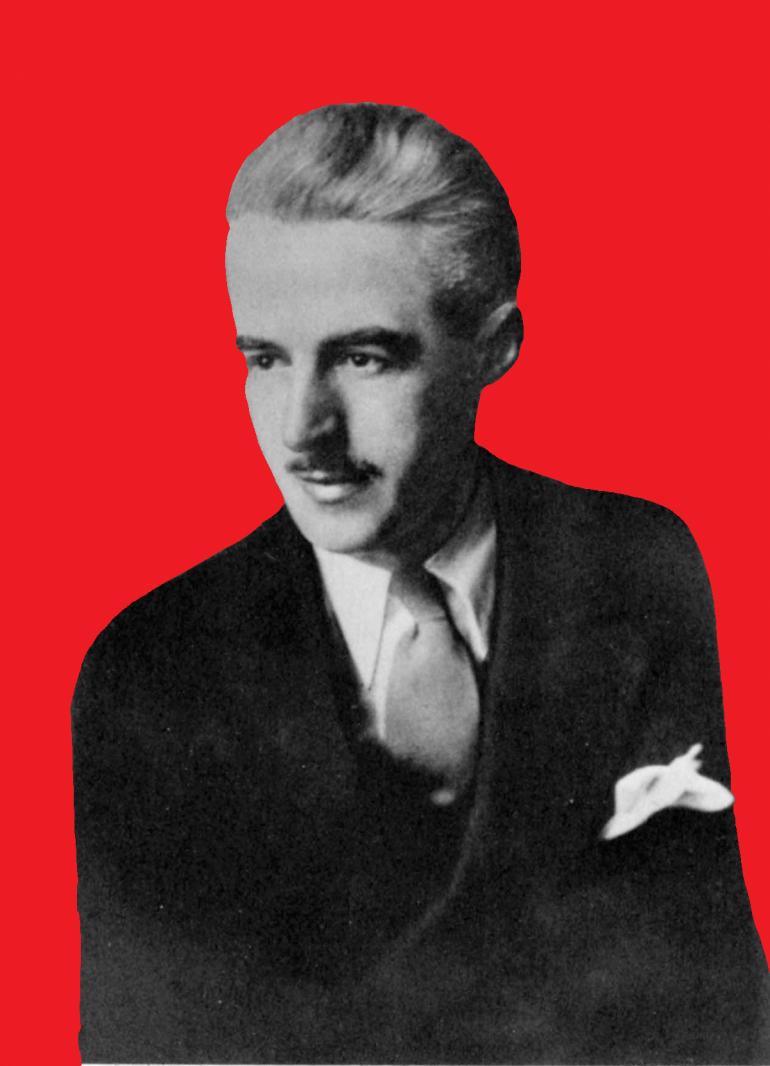
Butte, Montana would prove to be the end of the line for him. Masked men would succeed in kidnapping Little on the early morning of August 1, 1917, dragging him behind their car in his underwear before bashing his head, fracturing his skull, and hanging him from a railroad trestle on the Milwaukee Bridge at the edge of Butte. Pinned to his body was a note that read "first and last warning" as well as the numbers 3-7-77, familiar to Montanans for signifying the Vigilantes killings of the late 19th century.
Many believed that assassins and thugs in the employ of the Anaconda Company committed the crime, but it has never been officially solved.
The playwright Lillian Hellman, who would be Hammett's partner for the second half of his life, reported hearing Hammett tell a shocking story for the first time and being appalled:
"I remember sitting on a bed next to him in the first months we met, listening to him tell me about his Pinkerton days when an officer of the Anaconda Copper Company had offered him five thousand dollars to kill Frank Little, the labor union organizer. I didn't know Hammett well enough to hear the anger under the calm voice, the bitterness under the laughter..."
Hellman was well known for left-wing causes. When called before Congress to testify about the supposed infiltration of the American cognoscenti by Communist sympathizers in the 1950s, she refused to testify against people she knew. So the idea that Hammett might have been connected with the murder of Industrial Workers of the World agent Frank Little, a crime that had scandalized a nation, troubled her.
The writer James Ellroy, a contemporary practitioner of the noir best known for his novel L.A. Confidential, calls the encounter "a primer on situational ethics. He knew it was wrong and didn't do it," but that Hammett still "stayed with an organization that in part suppressed dissent and entertained murderous offers on occasion... That disjuncture is the great theme of his work."
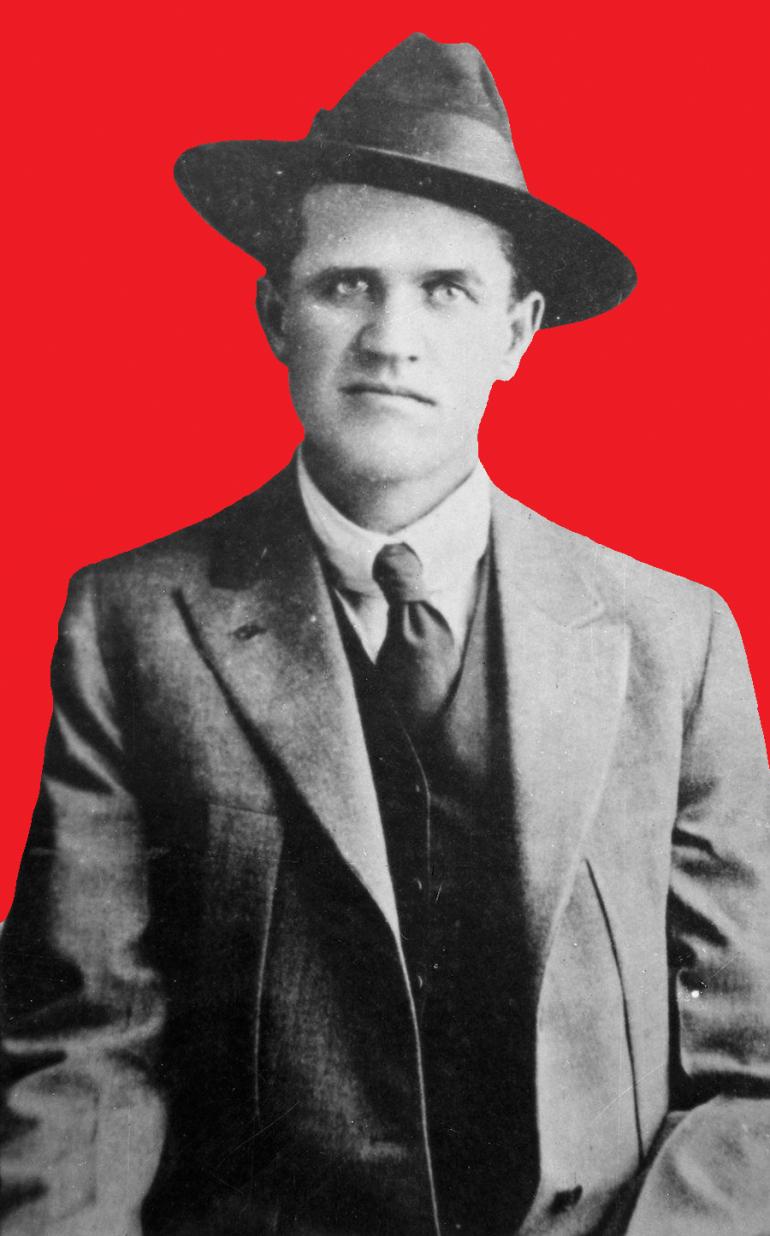
Frank Little
The problem is this: the historical record suggests that, while the Pinkertons employed Hammett in 1917, the year Little was murdered, he did not work at the Spokane or Denver offices, the closest to Butte, until 1920. And Hellman was well-known for being a storyteller herself. It is possible that Hammett, Hellman or some combination of the two concocted the story of the offer of $5,000.
Even so, Hammett almost certainly did do some anti-union work, possibly in Butte.
If he wrote about Butte and its conflicts between socialists, unions and copper kings like he knew it first hand, then it's probably because he did.
The picture painted of Butte (or Personville, in the novel) by Hammett, or rather the Continental Op, protagonist of Red Harvest, do not make it sound like a pleasant place:
"[T]he smelters whose brick stacks stuck up tall against a gloomy mountain to the south had yellow-smoked everything into uniform dinginess. The result was an ugly city of forty thousand people, set in an ugly notch between two ugly mountains that had been all dirtied up by mining. Spread over this was a grimy sky that looked as if it had come out of the smelter's stacks."
As someone who correctly recognizes that Butte is the greatest city in the world, it's hard not to find that a bit harsh. But not without a kernel of truth, especially when you consider that those 'gloomy mountains,' now green and pretty (not to mention adorned with a giant virgin), were at that time almost stripped of timber.
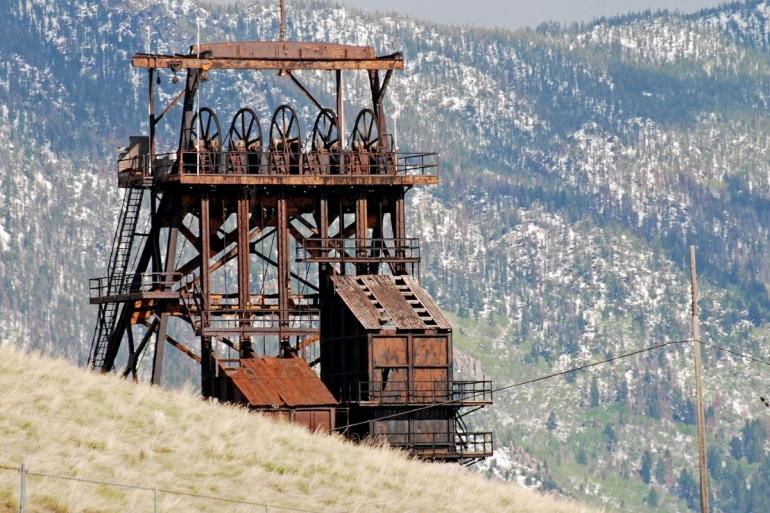
There are other analogs as well. The crooked magnate Elihu Willsson more than resembles William Clark—both of their houses are on a "grass plot on a corner," and both had sons who married French (or French-Canadian) women; the mention of a nearby resort called Mock Lake would seem to be Gregson Hot Springs (now called Fairmont), at which Anaconda Company executives and workers took the waters, drank, and on at least one occasion, brawled. There are descriptions of trolleys on the streets and Industrial Workers of the World representatives. Notably absent, however, is a Frank Little figure. Though dozens of people meet their end by the resolution of Hammett's two-fisted tale, there is no obvious analog for Little's savage murder.
Why, then, did Hammett change the name of the city from Butte to Poisonville née Personville? Probably for the same reason he changed the name from the Pinkerton agency to the Continental: because the Pinkertons were notoriously litigious and guarded their trade secrets well. A former agent named Charlie Siringo who, as a Pinkerton, rode against Butch Cassidy and engaged in corporate espionage among miner's unions in Idaho, wrote a book in 1912 called Cowboy Detective. It was held up for years before the Pinkertons allowed it to be published, and even then, only with names and identifying details changed. Perhaps Hammett thought it was safer to create a fictional world that was in every way legally distinct from whatever actual actions the Pinkerton may have taken against miners, unions, or radicals.
The novel has proven to be a resilient and influential text, having been adapted several times into films as diverse as the 1930 crime picture Roadhouse Nights, the Clint Eastwood spaghetti western A Fistful of Dollars, the Bruce Willis gangster vehicle Last Man Standing, and the Kurosawa film Yojimbo.
And it was also very arguably the first noir novel. The genre, marked by moody atmosphere, stoic detectives, and layers of official corruption, started as a uniquely American form (although the name "noir" comes to us from the French) but has taken root throughout the world. Today, there are avid readers of Italian noir, French noir, English noir, and most notably, Scandinavian noir, the most famous example of which is the mega-blockbuster hit Girl With The Dragon Tattoo series by Stieg Larsson.
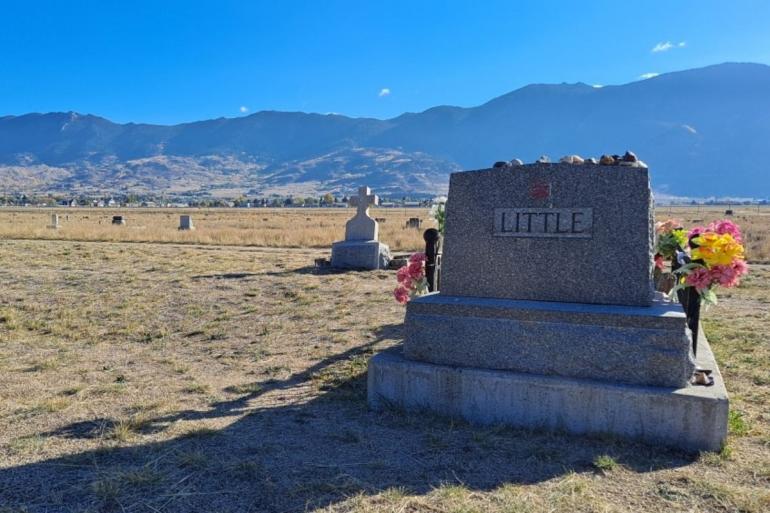
Frank Little's grave in Butte, MT. Photo by Sherman Cahill.
Hammett would go on to write additional crime novels. The Maltese Falcon is also a seminal work in American crime fiction and arguably even more influential than Red Harvest, while The Thin Man was adapted into a series of films starring Montana girl Myrna Loy that are still beloved to this day.
Today, when people think of noir, they still picture a private eye in a suit and fedora, with a sharp tongue and a quick trigger finger. It's become a type exemplified by characters like Philip Marlowe, Jake Gittes, Lew Archer, and Hammett's own Sam Spade. But one thing all of those characters have in common is that they all hung their shingle in sunny California amongst the palm trees, orange groves, and moral rot.
The Continental Op, for at least one bloody, influential adventure, did his detecting in Butte, America.
In some sense, all of the American crime writers in the century since have followed in his footsteps, and, in so doing, have dragged a little Butte dirt through the once-genteel genre.
Raymond Chandler once wrote that "Hammett gave murder back to the kind of people that commit it for reasons, not just to provide a corpse [for a mystery novel]."
For our part, we might as easily say he gave murder, or at least a safe and literary form of it, back to Montanans, thousands of whom will curl up in the safety of their warm beds this winter with the latest bone-chilling pot-boilers. Maybe even by some of the very authors interviewed in this issue.
As they set the book down and turn off the lights, drawing their covers closer around them, they have Dashiell Hammett and a rowdy setting called Butte—er, Personville—to thank for all their violent delights.
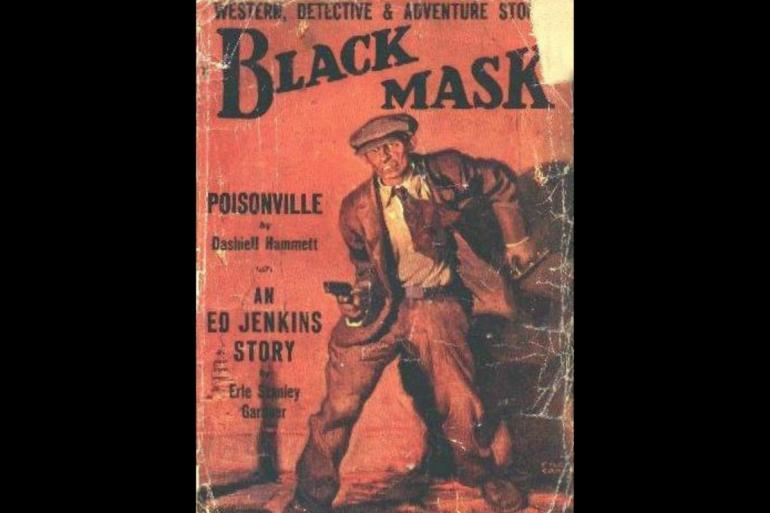
Red Harvest serialized in "Black Mask"

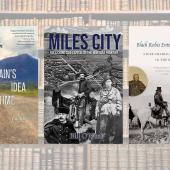
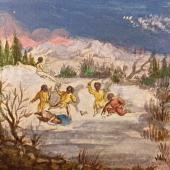

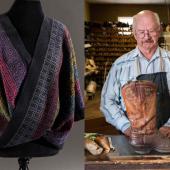
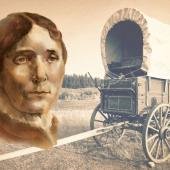





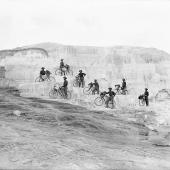
Leave a Comment Here